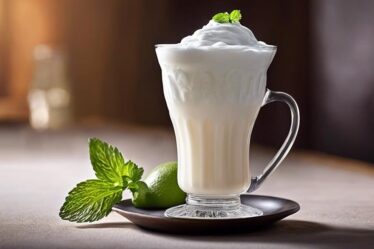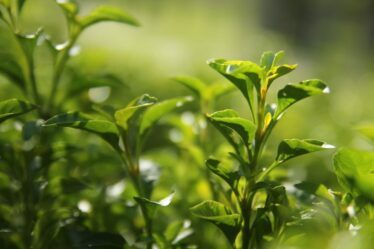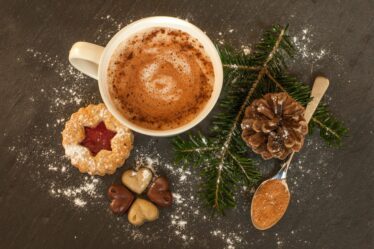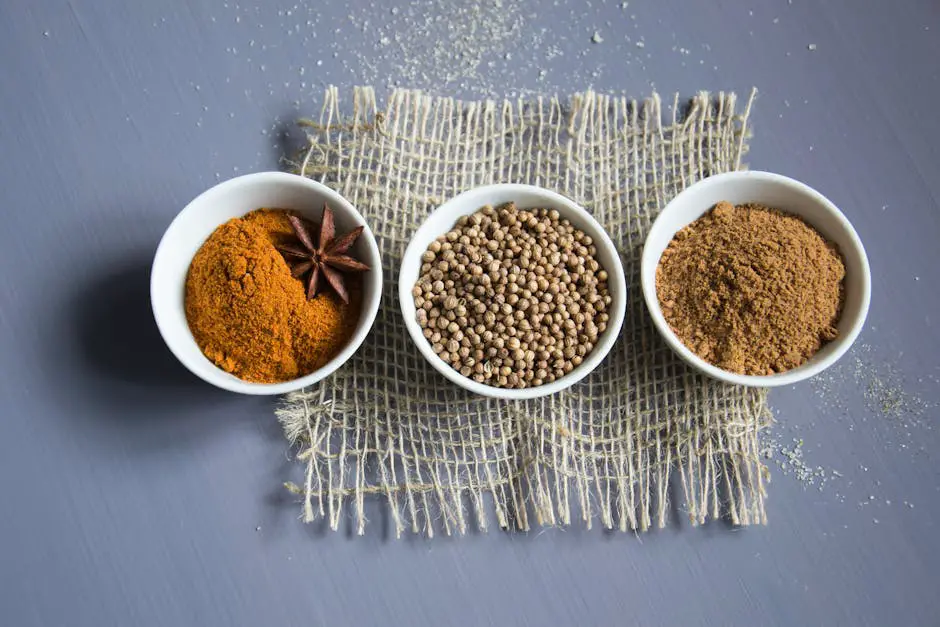
Common Baking Spices
Cinnamon, vanilla, ginger, and nutmeg are the backbone of many baking recipes. These spices bring depth and warmth that transforms simple ingredients into culinary magic.
Cinnamon, the sweet spice, is a superstar in the baking arena. It’s not just for toast; cinnamon works wonders in pies, cookies, and even savory dishes.
Vanilla is elegant yet versatile. This bean from the pod of a climbing orchid pairs beautifully with custards, cookies, and cakes of all kinds. Skip the artificial stuff; go for real vanilla extract or infuse your own for a deep, rich experience.
Ginger is the spicy rebel. Found in gingerbread cookies, cakes, and savory dishes, it’s been a staple since medieval times. Ground ginger adds a punch of bold flavor with a sweet undertone.
Nutmeg and its delicate sibling, mace, provide a warm, nutty taste that’s essential for holiday baking and more. Whether grated fresh over custards or added to complex spice blends, nutmeg elevates many dishes.
Allspice, a single spice with flavors reminiscent of cinnamon, nutmeg, and cloves, adds a warm, rounded flavor to cakes, pies, and meats.
Cloves bring the heat with their hot, spicy flavor that enhances baked goods, salads, and stews.
Cardamom has a flavor profile that’s part ginger, part floral, and wholly versatile. Use it in everything from chai spice blends to Swedish cardamom buns for a warm, citrusy sensation.
Anise seed sneaks into cookies and cakes with its sweet licorice-like flavor, while sesame seeds, particularly black ones, add a nutty crunch to bread and beyond.
These spices are more than just ingredients; they’re history, comfort, and the difference between a good bake and a great one.

Unique and Rare Baking Spices
If you’re looking to take your baking to the next level, consider using unique and rare spices like mahlab, wattleseed, and mesquite. These spices bring their own special magic to the kitchen, turning everyday bakes into something extraordinary.
Mahlab, the seed from the St. Lucie cherry, has a flavor that falls between almonds and cherries with a hint of vanilla. It’s perfect for adding depth to cookies, cakes, and pastries. Try it in coffee cakes or sprinkle it into your pie crust dough for a subtle surprise.
Wattleseed, a gem from Australia, has a smoky, nutty flavor with hints of coffee, chocolate, and hazelnuts. Imagine waking up to wattleseed-infused muffins or pancakes. You can even toss it into a chocolate torte or red wine reduction for a smoky, sophisticated note.
Mesquite brings a sweet and nutty taste, reminiscent of cinnamon toast and hot chocolate, but with more complexity. Mesquite flour, made from the inner fruit of mesquite pods, can be used in cookies, pancakes, and even a mesquite pecan pie.
Experimenting with these unique spices means embarking on a little adventure right in your kitchen. It’s the difference between singing along to a song you know and improvising a new riff that’s all your own.
Next time you’re restocking your pantry or wandering through a spice shop, keep an eye out for these rare gems. Adding mahlab to a pound cake, wattleseed to your morning granola, or mesquite to chocolate chip cookies might be just what you’ve been missing.
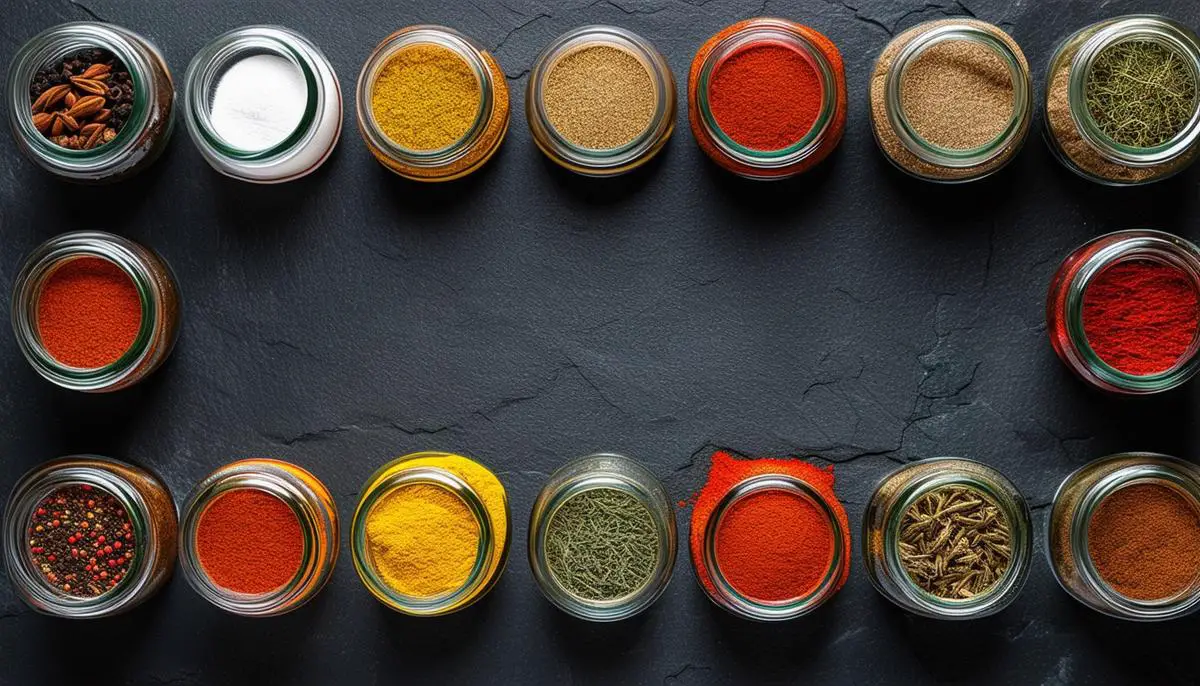
Baking with Spice Blends
Spice blends are the secret ingredient of bakers who like to put their own twist on things. These blends add layers of complexity that can turn ordinary cookies and cakes into something extraordinary.
A classic example is the baking spice mix—a blend of cinnamon, nutmeg, allspice, and ginger. This combination brings warmth, depth, and zest to your baked goods. It’s perfect for pies, muffins, and bread recipes. You can easily make your own by mixing:
- 2 tablespoons of cinnamon
- 1 tablespoon of nutmeg
- 1 ½ teaspoons of allspice
- 1 ½ teaspoons of ginger
Chai spice mix is another favorite. It’s fantastic in cookies, cakes, and breakfast items like oatmeal or French toast. To make your own, combine:
- 2 teaspoons of ground ginger
- 1 ½ teaspoons of cinnamon
- 1 teaspoon of ground cloves
- 1 teaspoon of ground cardamom
- ½ teaspoon of ground black pepper
Custom spice blends are an exciting way to cater flavors to your liking. Start with a base spice, usually one that’s warm and familiar like cinnamon or nutmeg. Then, add complementary spices—each with a specific role to play. For a custom cookie blend, consider starting with cinnamon and nutmeg, then add a hint of cloves for depth and a touch of ginger for zing. You can even throw in a dash of cardamom or allspice for an unexpected note.
When blending spices, always use a light hand. Spices are potent, and a little goes a long way. Start small, blend, and taste-test.
For a fun twist, try swapping in less common spices like mahlab or mesquite into your blends. Imagine the nutty, lightly cherry flavor of mahlab enhancing a spice cookie blend, or the smoky sweetness of mesquite warming up a chai spice mix.
By creating your own spice blends, you invite a world of new flavors into your kitchen. Bake a batch of chai-spiced snickerdoodles or a loaf of mesquite-tinged banana bread. Your taste buds—and your friends and family—will be in for a treat. Happy blending!
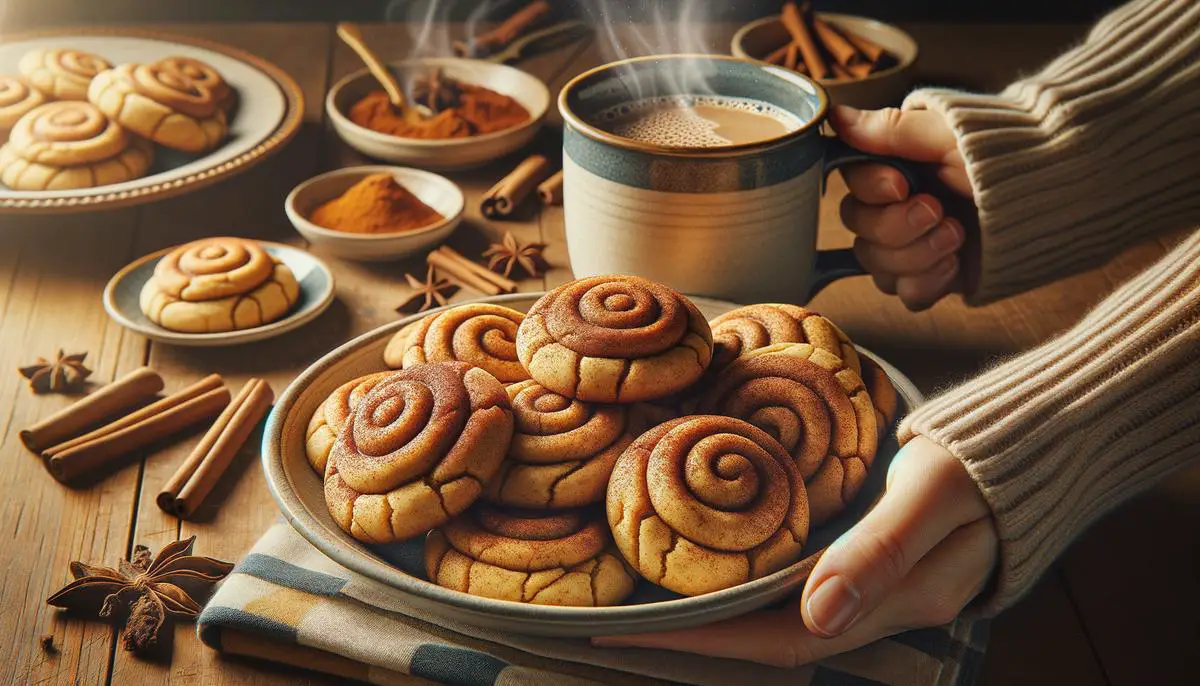
Sourcing and Quality of Spices
When sourcing and selecting high-quality spices, treat yourself to quality, because just like with good wine, the superiority of your ingredients makes all the difference.
First, let’s talk about understanding the origin of the spices you buy. For instance, with cinnamon, you’re more likely to encounter Cassia cinnamon than the more delicate, sweeter Ceylon (“true” cinnamon). If you’re making something sweet, Ceylon might be your best bet. Savory dishes might enjoy the bolder flavors Cassia brings. Always check the label to ensure you know what you’re getting.
Where your spices come from affects their complexity and depth. Go for spices sourced from places renowned for producing them. For nutmeg and cloves, options grown in the tropical climates of Zanzibar are excellent. Vanilla shines brightest when it hails from Madagascar or Tahiti.1
Whole spices, ground as needed, pack a punch in flavor that stale, pre-ground spices can’t compete with. A good spice grinder or quality mortar and pestle can transform your kitchen endeavors.
When shopping, pay attention to the appearance and aroma of the spices. Cinnamon sticks should be tightly rolled with a reddish-brown hue. Fresh nutmeg has intricate, lacy lines and an oily sheen. Vanilla beans should be supple and moist. Trust your nose—if a spice doesn’t make you pause and take another whiff, it probably isn’t at its most flavorful.
Spices, especially extracts like vanilla, need to be bake-proof. High-quality extracts will withstand the oven’s heat while retaining their flavor. Look for extracts that specify they are bake-proof, often marked as having no artificial fillers.
For the purists, infusing your own vanilla extract adds a certain flair to your baking projects. Split a fresh vanilla bean, scrape out the seeds, and add both seeds and the pod to a small glass bottle of vodka or rum. Let it steep in a cool, dark place for at least a month, shaking it occasionally.2
For rare gems like wattleseed or mahlab, specialty spice shops or reputable online retailers are your best bet. Read reviews and opt for sellers who show a passion for their products, ensuring your spices are top-notch.
Spices aren’t just about flavor; they also bring a story to your kitchen. It’s rewarding to know your savory nutmeg or floral cardamom pods came from a sustainable farm halfway around the world. It makes every bake session a small tale of global culinary heritage.
Treat your spices with respect, and in return, they’ll take your baked goods from good to unforgettable. Happy baking, spice aficionados!
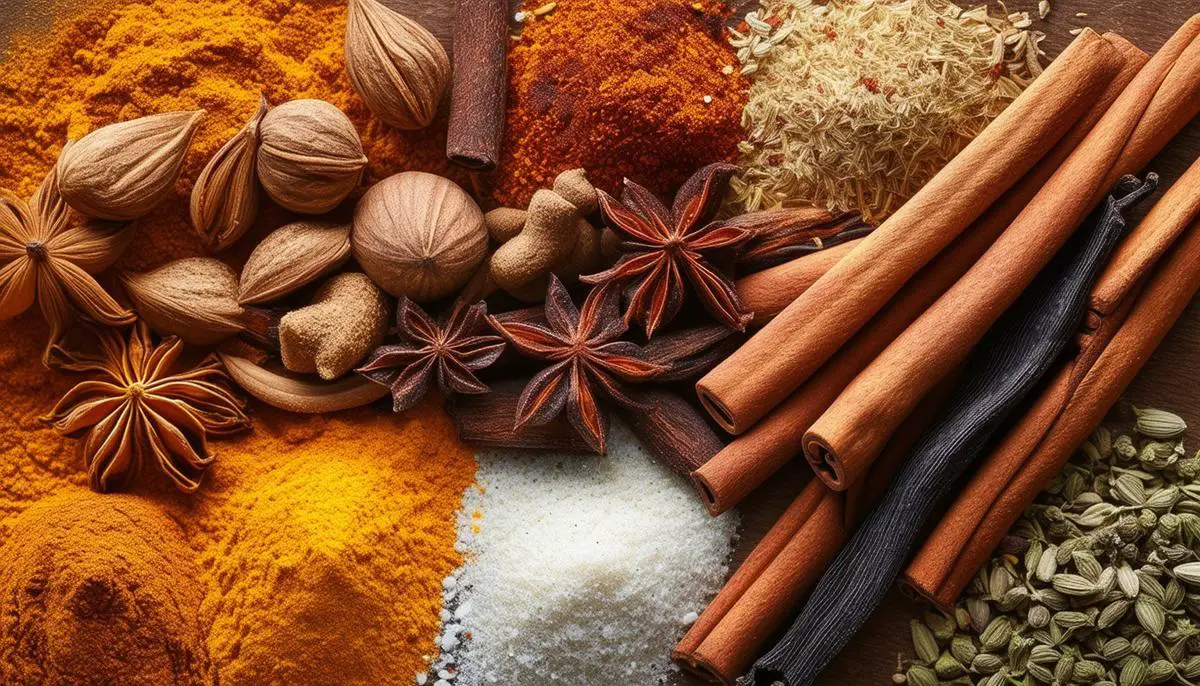
Historical and Cultural Uses of Baking Spices
Cinnamon, the darling of the spice world, traces its sweet roots way back to ancient Egypt. These folks used it in their embalming process, believing it had strong preservative qualities. Fast forward to the Middle Ages, and cinnamon was more valuable than gold. Europeans were practically obsessed, using it in everything from stews to pastries, symbolizing wealth and luxury.
Nutmeg, from the Banda Islands of Indonesia, was once at the center of quite the colonial tug-of-war. It was believed to have medicinal properties that could cure the bubonic plague. Nutmeg’s allure was so potent that the Dutch and the British swapped entire islands just to secure trade routes.
Vanilla has a rich history too. The Totonac people of Mexico were the first to cultivate vanilla pods and regarded them as sacred. When the Aztecs conquered the Totonacs, they demanded tribute in the form of vanilla beans, which they used to flavor their chocolate drinks. In the 17th century, vanilla made its way to Europe, where it quickly became the toast of the culinary town. This tropical treasure even graced Thomas Jefferson’s ice cream recipe, making it an American classic.1
Many sweet cultural traditions are entwined with these spices. In Indian cuisine, cardamom isn’t just thrown into chai; it has auspicious roots, often used in wedding dishes symbolizing growth and prosperity. Cloves brighten up biryanis and festive cookies during Eid and other celebrations. Over in Scandinavia, cardamom and cinnamon rolls (kanelbullar) are a staple treat, sharing warmth and coziness through long winters.
In the Middle East, cinnamon is lovingly stirred into fragrant rice dishes, spiced teas, and hearty tagines. It’s a staple in the aromatic spice mix called “baharat,” which flavors everything from meats to desserts. The scent of cinnamon is practically part of the cultural fabric, a comforting constant.
In Asia, ginger steals the show. Wielded as a powerful ingredient in both sweet and savory dishes, it’s celebrated for its health benefits as much as its flavor. In Chinese culture, ginger tea is a health elixir, shared through countless generations.2
In Latin cuisine, vanilla finds its way into a multitude of sweets, from flan to churros, adding that signature creamy aroma. And the peppery warmth of cinnamon in Mexican chocolate is a match made in heaven.
So the next time you sprinkle a bit of cinnamon into your apple pie, grate some nutmeg over your latte, or add a splash of vanilla to your cookie dough, take a moment to appreciate the journey these spices have taken. From ancient rituals and colonial battles to modern kitchens and festive tables, baking spices aren’t just ingredients—they’re time-tested treasures that bring history and culture right into our homes.

Expert Tips for Using Baking Spices
When it comes to maximizing the flavor of your baking spices, there are a few expert tips to keep in mind. Whether you’re trying to decide between whole and ground spices, figuring out how to steep those spices to perfection, pairing them just right, or avoiding foolish missteps, it’s all about getting the most out of every pinch and dash.
First up, whole vs. ground spices. Whole spices are like unpolished gems; grind them yourself, and you reveal their full, aromatic glory. Using a good spice grinder or a sturdy mortar and pestle ensures you get the freshest, most potent flavors. If the convenience of pre-ground spices is calling your name, always make sure your stored spices haven’t lost their mojo. If they smell less like paradise and more like your grandma’s attic, it’s time for a fresh batch.
Steeping is another technique that can elevate your baking game. It’s all about infusing a whole spice into a warm liquid to extract its deepest, richest flavors. Let vanilla beans, cinnamon sticks, or cardamom pods bathe in warm liquids like milk or cream to release their full essence into your recipes.
Pairing spices correctly is like finding the perfect dance partner—they need to complement each other’s moves. Here are some classic spice pairings:
- Cinnamon pairs beautifully with apples, dark chocolate, and walnuts.
- Ginger works wonders with molasses for gingerbread or with citrus for a refreshing zing.
- Nutmeg elevates creamy dishes like Alfredo sauce and custards.
One crucial tip from the pros is about balance. Don’t go overboard mixing too many spices together; they should harmonize rather than clash. Stick with a few well-chosen spices to let their individual notes shine.
Finally, let’s avoid some common mistakes. Keep your spices in a cool, dark place to maintain their potency. If a spice isn’t giving off that signature aroma, it’s lost its flavor punch and should be replaced. Another mistake is using too much extract—especially artificial ones—that can lend a chemical aftertaste. High-quality, bake-proof extracts deliver pure flavor without the weird aftertaste.
Remember, a little goes a long way. Spices are potent, so start with a small amount and add more as needed. You can always ramp up the flavor, but it’s hard to dial it back once it’s in there, so taste and adjust as you go.3
So, next time you’re ready to shake up your spice game, keep these expert tips in mind. With the right techniques and mindful pairing, your baking will soar to new heights. Your kitchen will be a haven of fragrant, delicious wonders—all thanks to the magic of spices.
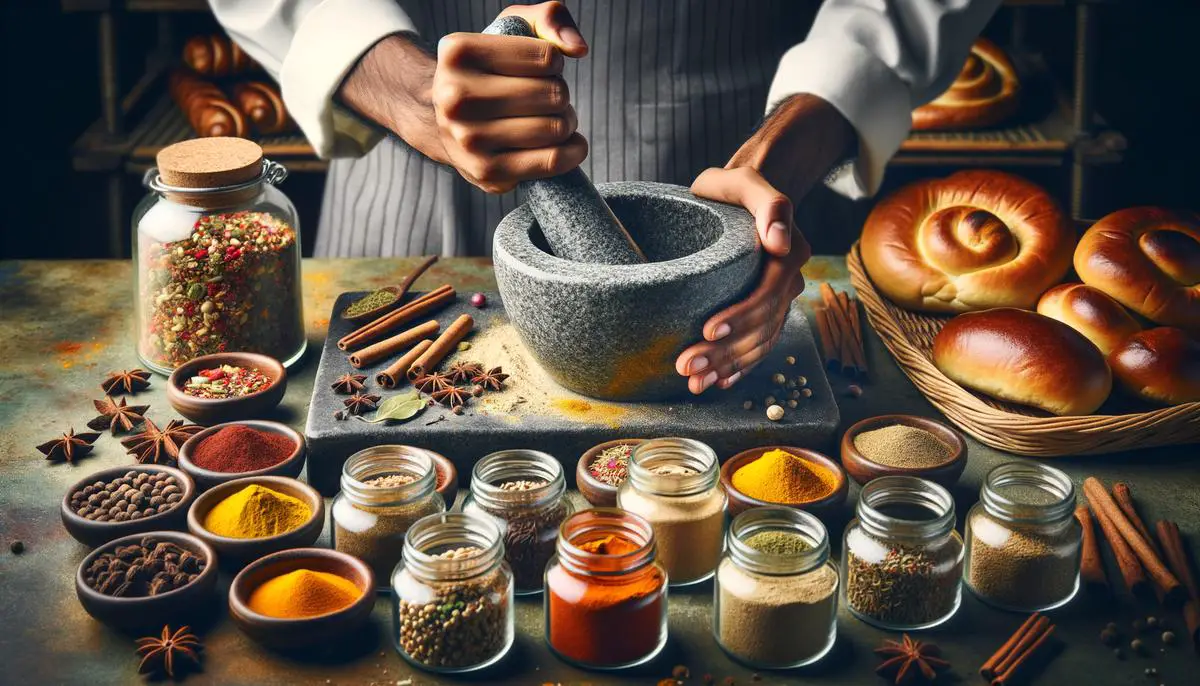
The next time you reach for those baking spices, remember their rich history and the depth they bring to your creations. Let them transform your kitchen into a place of warmth and comfort. Happy baking!

